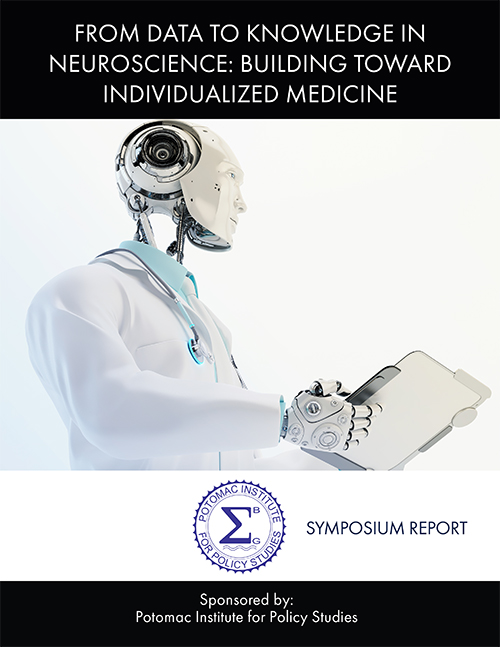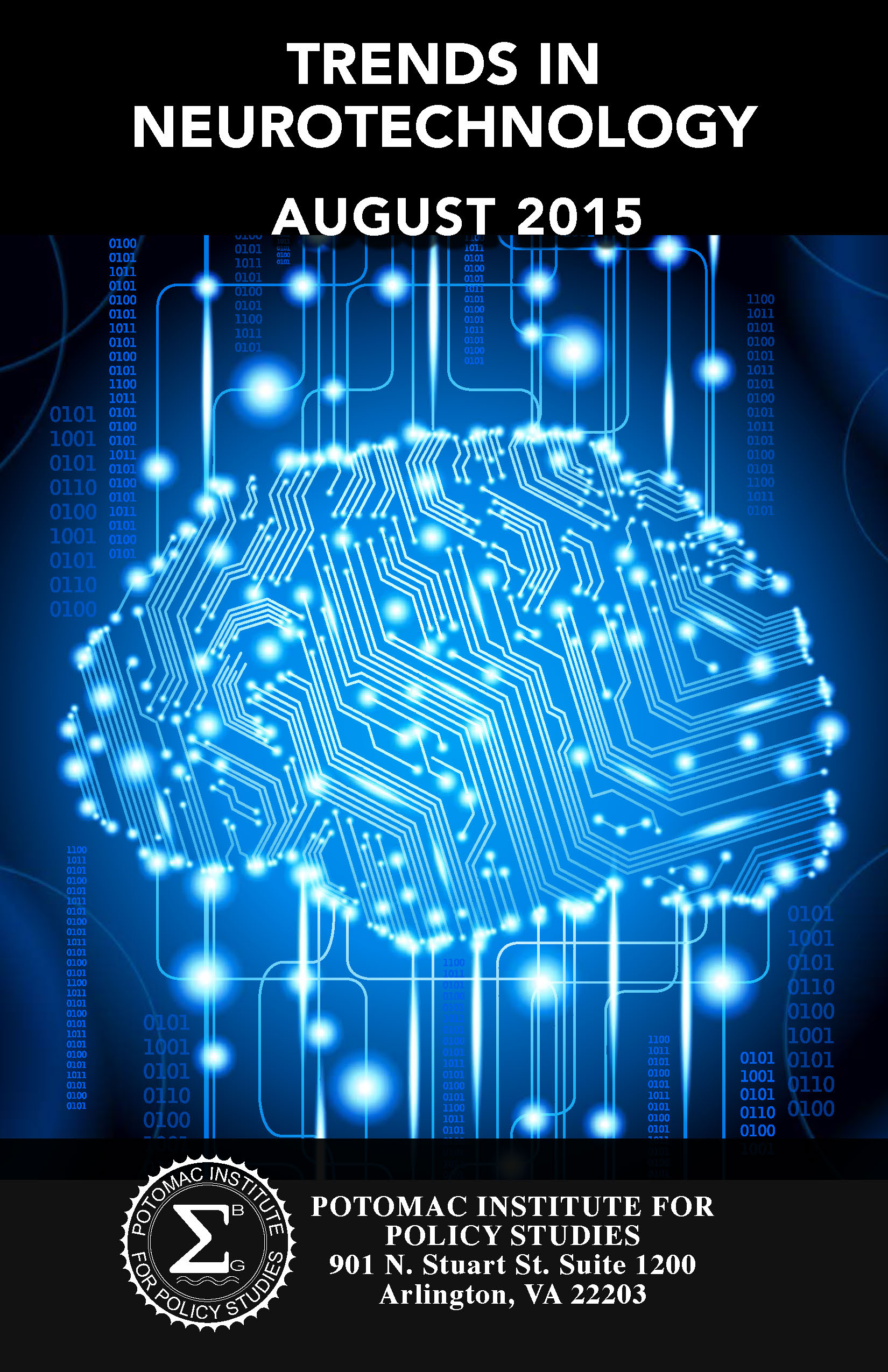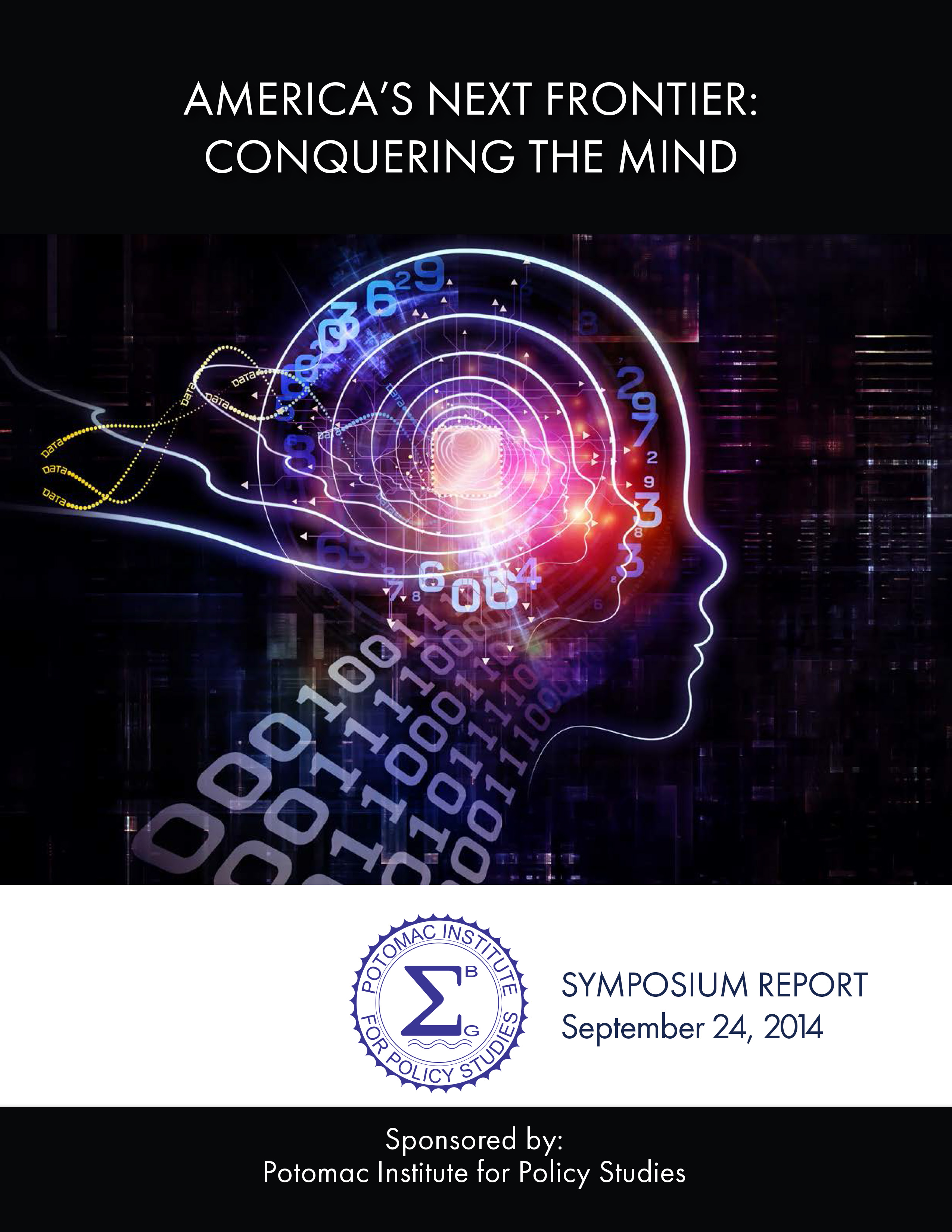Publications
Executive Summary Excerpt:
American innovation has led to some of the world’s most inventive and successful medical devices and treatments. However, the medical industry has yet to maximize the potential of the massive amounts of health data offered by new technologies. Medicine is moving into a data-centric era where our ability to anticipate, understand, diagnose, treat, and heal illness and disease will be completely revolutionized. Currently, the field of neuroscience is trying to transform medicine by leveraging the novel opportunity of Big Health Data. To capitalize on this revolutionary opportunity, America must look towards the future – taking advantage of Big Health Data by embracing technological advancements, sharing personal data responsibly, and discovering new health knowledge. Doing so will enable breakthroughs in health innovation, decrease healthcare costs, and help realize the dream of personalized medicine.
This most recent effort by the Potomac Institute’s Center for Neurotechnology Studies (CNS) continues its long-standing mission to follow and understand the latest neuroscientific advancements and neurotechologies. In 2013, the Institute’s CNS report “Neurotechnology Futures Study” presented a technology investment Roadmap and outlined the key research areas and technologies required to move neurotechnology forward. The Institute’s 2015 report “Trends in Neurotechnology” discussed the vast implications of neurotechnology – not only for particular fields such as medicine and defense, but also for society as a whole.
Download the full PDF here
A Collaboration Between the Potomac Institute for Policy Studies and SharpBrains
Read more: A Seminar on The Neurotechnology Revolution: Market Trends & Impacts
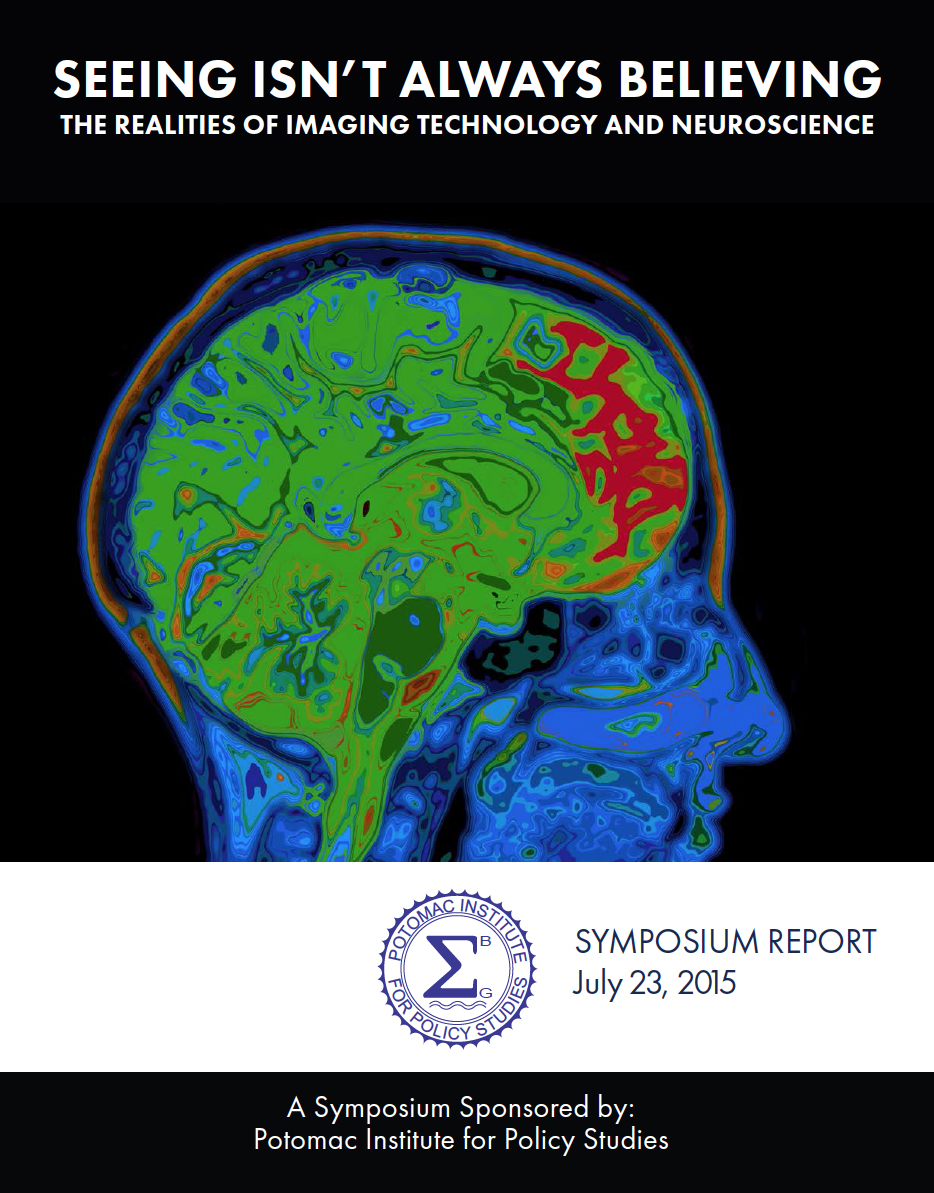 On July 23rd, 2015, the Potomac Institute for Policy Studies hosted a seminar to address the various ways in which neuroimaging technology has advanced, and how these new developments can be used to achieve the goals of the President’s BRAIN Initiative. The BRAIN Initiative has spearheaded an effort to map and understand the human brain, and novel neuroimaging technologies need to be developed in order to accomplish this goal. Neuroimaging encompasses the set of techniques that researchers use to create a structural and/or functional map of the nervous system. There have been many laudable achievements in developing neurotechnologies over the years, especially in the area of imaging and observing the brain, but technology development has stalled over recent years. Because of the growth of capabilities in other fields, from microelectronics and supercomputing to artificial intelligence, there is a renewed opportunity for collaboration that can result in even more significant improvements to the neurotechnology imaging tools available to researchers.
On July 23rd, 2015, the Potomac Institute for Policy Studies hosted a seminar to address the various ways in which neuroimaging technology has advanced, and how these new developments can be used to achieve the goals of the President’s BRAIN Initiative. The BRAIN Initiative has spearheaded an effort to map and understand the human brain, and novel neuroimaging technologies need to be developed in order to accomplish this goal. Neuroimaging encompasses the set of techniques that researchers use to create a structural and/or functional map of the nervous system. There have been many laudable achievements in developing neurotechnologies over the years, especially in the area of imaging and observing the brain, but technology development has stalled over recent years. Because of the growth of capabilities in other fields, from microelectronics and supercomputing to artificial intelligence, there is a renewed opportunity for collaboration that can result in even more significant improvements to the neurotechnology imaging tools available to researchers.
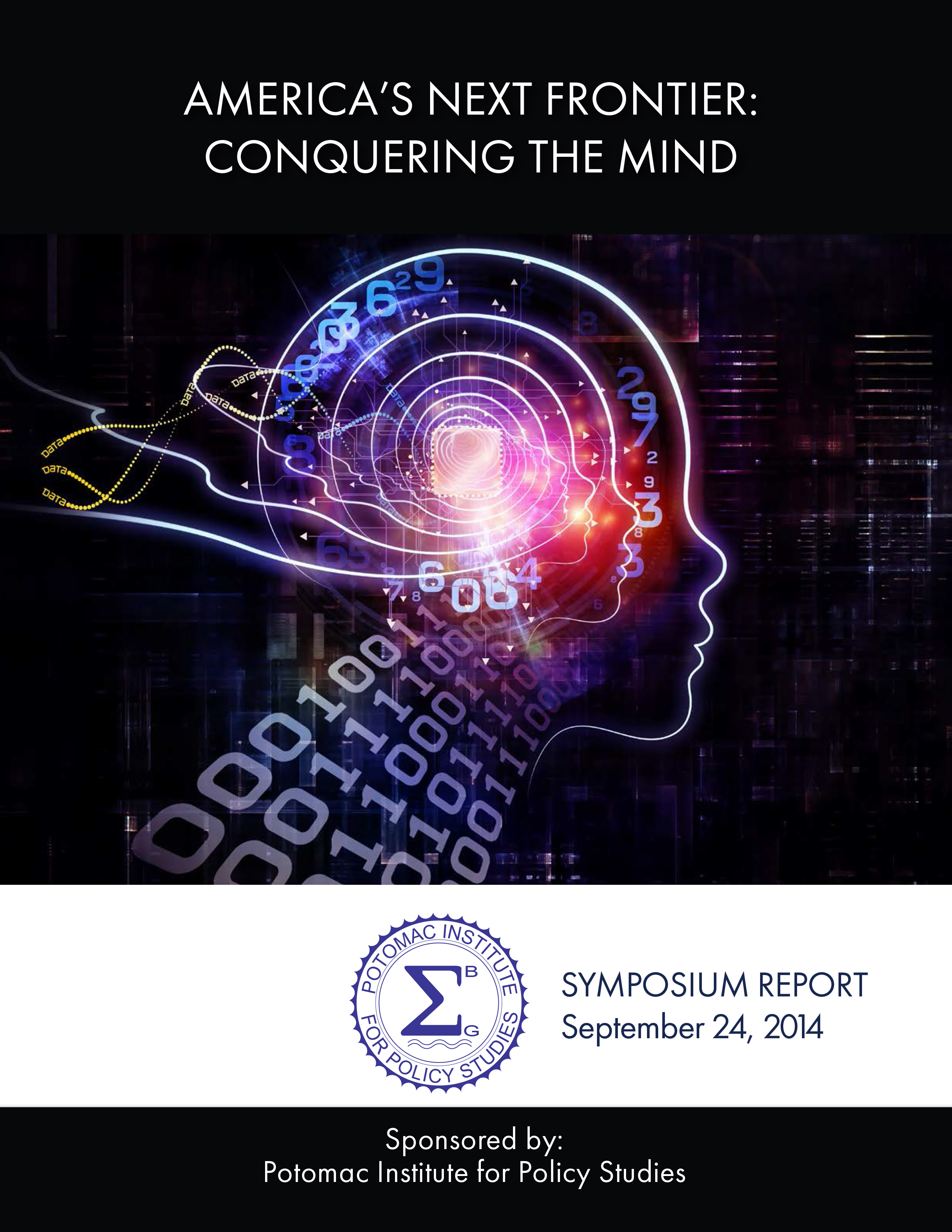 On September 24th, 2014 the Potomac Institute for Policy Studies held a seminar on Capitol Hill titled “America’s Next Frontier: Conquering the Mind”. This seminar featured remarks from Dr. Amy Kruse, Dr. Peter Littlewood, and representatives from the Potomac Institute. The panelists discussed the need for a National Neurotechnology Initiative, a comprehensive effort to understand the human brain. To succeed, this initiative requires well-defined project objectives, strong leadership, and unprecedented levels of interdisciplinary collaboration. The discussion focused on the key technologies and collaborations between fields that will enable our scientists to map the multitude of connections between neurons in the brain, interpret how the brain encodes information within these connections, in order to ultimately uncover the biological bases of behavior. We must build on the successes of previous science initiatives and capitalize on the revolutionary technologies that they created to enable neuroscience to become a powerful driver for all aspects of society.
On September 24th, 2014 the Potomac Institute for Policy Studies held a seminar on Capitol Hill titled “America’s Next Frontier: Conquering the Mind”. This seminar featured remarks from Dr. Amy Kruse, Dr. Peter Littlewood, and representatives from the Potomac Institute. The panelists discussed the need for a National Neurotechnology Initiative, a comprehensive effort to understand the human brain. To succeed, this initiative requires well-defined project objectives, strong leadership, and unprecedented levels of interdisciplinary collaboration. The discussion focused on the key technologies and collaborations between fields that will enable our scientists to map the multitude of connections between neurons in the brain, interpret how the brain encodes information within these connections, in order to ultimately uncover the biological bases of behavior. We must build on the successes of previous science initiatives and capitalize on the revolutionary technologies that they created to enable neuroscience to become a powerful driver for all aspects of society.
